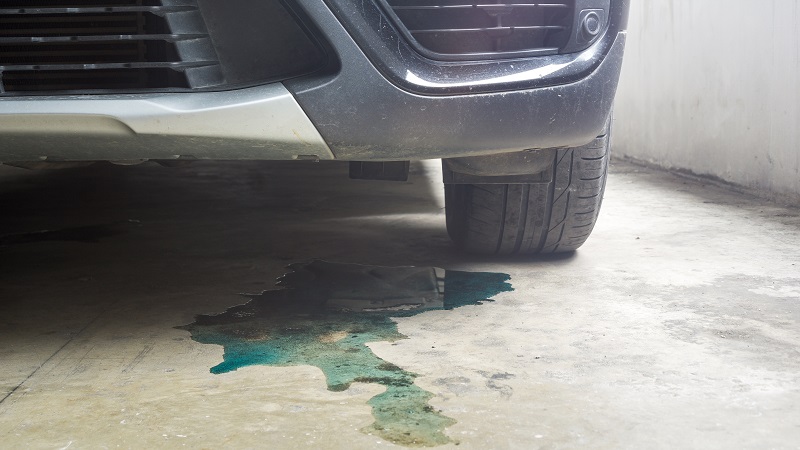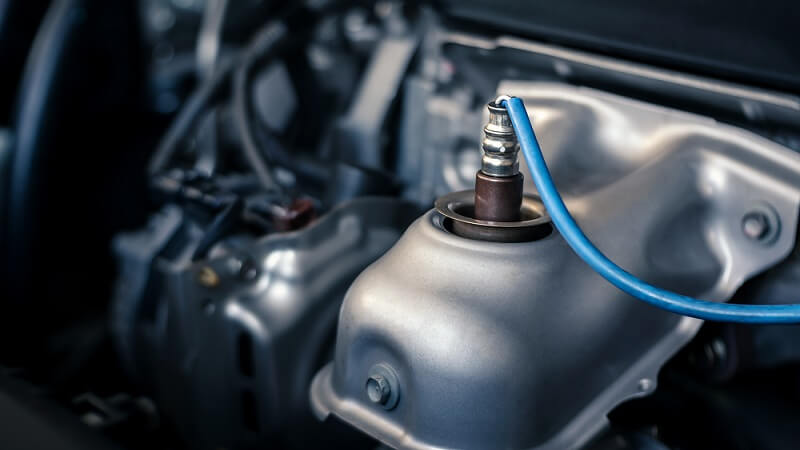Although a small coolant leak doesn’t seem like a pretty serious issue, it can lead to complete engine failure and irreparable damage. The coolant system is one of the most important parts of any car because it keeps the engine temperature in check by cooling the antifreeze/water mix that runs through the engine block. This is done using a series of hoses, radiators, and fans.
It’s not uncommon to experience minor issues with the cooling system, especially if you drive your car often. In this article, we’ll go through some of the most common coolant leak causes, and what you can do to check the cooling system.
Article updated on 11/24/21
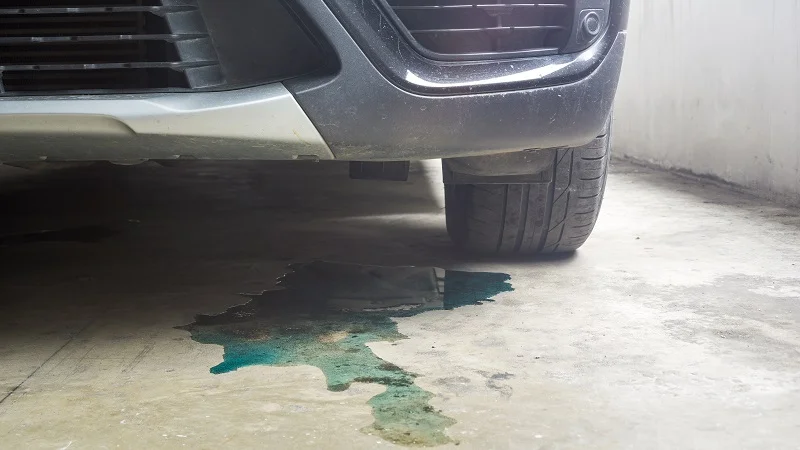
What Causes A Coolant Leak?
The cooling system isn’t the most complex thing on your car, but does include a bunch of potential failure points. We’re talking clamps, hoses, and more. Any of these can start leaking for a variety of reasons.
Checking your coolant tank once in a while will ensure you won’t drive the car with a less than optimal level of coolant in the system. If you notice a puddle under your car, make sure to check the coolant levels right away because it doesn’t take long for a car engine to overheat if there’s not enough fluid in the radiator.
A Cracked Radiator Or Faulty Hoses
Physical damage is the number one culprit when it comes to a coolant leak. Like any other part of the car, the entire cooling system is prone to wear due to aging. Even the smallest puncture in the radiator or hoses will cause the coolant to leak.
It’s common for a radiator to get punctured if the car has been driven on rough terrain. Rocks can cause small holes in the radiator which can lead to a coolant leak as well.
Leaky Radiator Cap
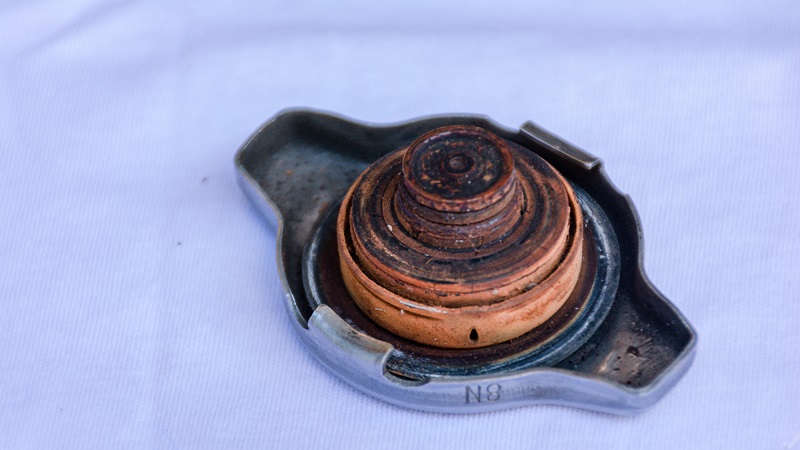
Although it doesn’t seem like an important part of the system, the radiator cap plays an important role. The cooling system is under extreme pressure, and the radiator cap’s job is to hold that pressure and prevent any leaks.
Since the temperatures inside the cooling system often reach extreme levels, the radiator cap can buckle under pressure. Once deformed, the radiator will start leaking coolant.
Faulty Water Pump
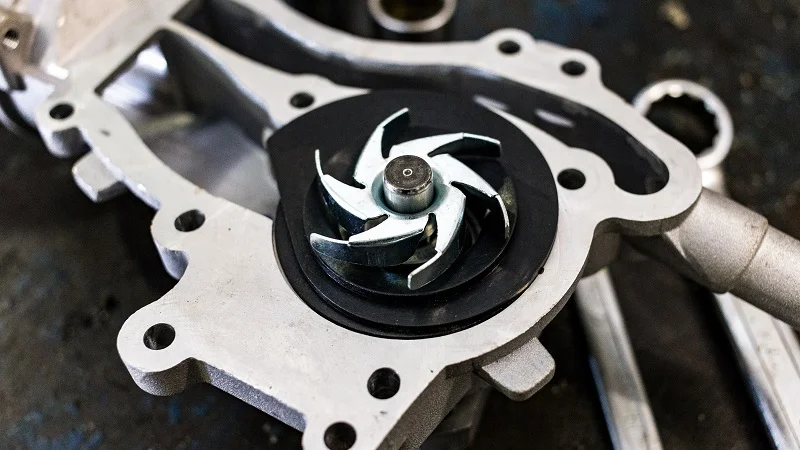
Aside from physical damage to the radiator, a faulty water pump is also a common cause of a coolant leak. In most cars, it needs to be replaced every 60,000 miles, so if you bought your car new, you probably won’t need to worry about the water pump.
If you bought a used car, it would be recommended to replace the water pump even if it doesn’t show any signs of going bad.
Faulty Expansion Tank
The expansion tank is in most car models placed beside the engine. Its function is to hold the coolant, and it’s connected to the radiator with rubber hoses. These rubber hoses lead the coolant from and to the expansion tank, so if there’s any sort of crack on the tank, or if the hoses are worn, there’s no question where the leak is coming from.
Cooling System Maintenance
Although the cooling system usually doesn’t require much maintenance, there are a few things you can do to prevent coolant leaks and avoid expensive repairs. Your car’s engine needs a fully working cooling system to operate properly. If there are leaks or any other types of faults, the engine can quickly overheat, and that can lead to far more serious problems in the future.
Maintenance you can do to keep your car’s cooling system in good condition includes:
- Regularly checking the level of coolant and topping up if needed
- Regularly checking for leaks or coolant consumption
- Checking the coolant condition prior to the winter months
- Replace coolant every few years or every 30,000 miles
Checking the coolant level is a simple process and only requires visually checking the coolant level in the expansion tank. Modern cars have a sensor that will tell you the current coolant level, but checking yourself is just a measure of precaution because sensors can sometimes be faulty.
If you’re suspicious of a coolant leak, the sure way of knowing is to place a piece of cardboard under the engine. Because most coolants are colored red or green, even if the leak evaporates, a smudge will be visible on the cardboard once you check it.
Consumption of coolant is harder to spot, especially because the car will drive the same if the leak isn’t too serious. You can use a permanent marker and mark the exact level of coolant in the expansion tank, and see if the level has decreased in a few hundred miles.
Can You Drive A Car With A Coolant Leak?

Coolant leaks can vary in severity. If the coolant is pouring out of your cooling system, it’s not recommended to even start your engine. This indicates a severe issue with the cooling system that can lead to terminal damage to the car’s engine.
On the other hand, if you’re losing small amounts of coolant, and you can make it to your mechanic without the coolant level dropping below the minimum threshold, it could be worth the risk. Just make sure the amount of coolant you’re losing doesn’t increase while you’re driving.
If you notice a coolant leak, even a small one, it’s best not to drive the car at all, especially because the leak can get bigger quickly, thus making your engine overheat.
Why Is My Car Losing Coolant But Not Overheating?
There are a few reasons why your car has coolant leaks but doesn’t overheat. It usually indicates early stages of an issue, and it’s commonly fixed quickly and inexpensively. Even though it’s not a serious issue right away, it can cause serious damage to your car if not taken care of promptly.
The first and most common reason is a faulty radiator cap. It can go bad just from being old and worn and if it doesn’t fit properly, it can leak coolant because the entire system is under pressure. The good thing about this is that it’s easy to fix – you just need to replace the radiator cap with an OEM one.
Another common reason for coolant leaks is a blown head gasket. This allows the coolant to escape the closed system, but because the crack is very small and on the engine block, the escaped coolant evaporates the moment it exits the system, which makes it pretty difficult to spot, especially if you’re not a mechanic.
If you notice the level of coolant dropping constantly, but you can’t see a visible leak under the car, take your car to a certified mechanic for troubleshooting. You can save a lot by addressing the issue sooner than later.
Even though your car is losing coolant constantly, it won’t overheat as long as the level of coolant is above the minimum threshold.
What Happens If I Don’t Fix My Coolant Leak?
It’s already mentioned that the cooling system is a vital part of any car. Without it, the car’s engine would overheat in a matter of minutes that will cause irreparable damage.
Even if you notice a small leak in your car’s cooling system, it can quickly turn into a huge leak that will quickly cause the car to overheat. If you notice your temperature gauge moving above the safe temperature, stop your car right away and call for roadside service because it’s no longer safe to drive.
Another serious symptom of a coolant leak is white smoke coming from your exhaust. White smoke usually indicates that the coolant has reached the cylinders which already means you’ll need to leave your car at the mechanic for a few days because a lot of engine parts will need to come off to fix this problem.
Buying The Parts You Need To Fix Coolant Leaks On Your Car
No matter what’s the cause of the coolant leaks on your car, you’ll need to get it fixed as soon as possible. Some fixes are easy and don’t require any special tools such as replacing the radiator cap. The thing that you will need is a genuine OEM part that will fit your car and fix the issue you’re facing.
Thankfully, we at Newparts.com offer a wide range of OEM parts for almost all European vehicles! All you need to do is visit our website, choose the make and model of your car, and you’ll get results based on your answers.


